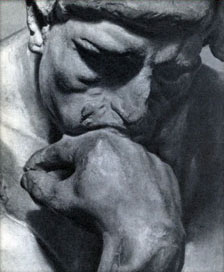Moral Rearmament Movement See BUCHMAN -. IS. moral sense theory, an ethical theory, developed by eighteenth-century British philosophers – notably Shaftesbury, Hutcheson, and Hume – according to which the pleasure or pain a person feels upon thinking about (or ‘observing’) certain character traits is indicative of the virtue or vice, respectively, of those features. It is a theory of ‘moral perception,’ offered in response to moral rationalism, the view that moral distinctions are derived by reason alone, and combines Locke’s empiricist doctrine that all ideas begin in experience with the belief, widely shared at the time, that feelings play a central role in moral evaluation and motivation. On this theory, our emotional responses to persons’ characters are often ‘perceptions’ of their morality, just as our experiences of an apple’s redness and sweetness are perceptions of its color and taste. These ideas of morality are seen as products of an ‘internal’ sense, because they are produced in the ‘observer’ only after she forms a concept of the conduct or trait being observed (or contemplated) – as when a person realizes that she is seeing someone intentionally harm another and reacts with displeasure at what she sees. The moral sense is conceived as being analogous to, or possibly an aspect of, our capacity to recognize varying degrees of beauty in things, which modern writers call ‘the sense of beauty.’
Rejecting the popular view that morality is based on the will of God, Shaftesbury maintains rather that morality depends on human nature, and he introduces the notion of a sense of right and wrong, possessed uniquely by human beings, who alone are capable of reflection. Hutcheson argues that to approve of a character is to regard it as virtuous. For him, reason, which discovers relations of inanimate objects to rational agents, is unable to arouse our approval in the absence of a moral sense. Ultimately, we can explain why, for example, we approve of someone’s temperate character only by appealing to our natural tendency to feel pleasure (sometimes identified with approval) at the thought of characters that exhibit benevolence, the trait to which all other virtues can be traced. This disposition to feel approval (and disapproval) is what Hutcheson identifies as the moral sense. Hume emphasizes that typical human beings make moral distinctions on the basis of their feelings only when those sentiments are experienced from a disinterested or ‘general’ point of view. In other words, we turn our initial sentiments into moral judgments by compensating for the fact that we feel more strongly about those to whom we are emotionally close than those from whom we are more distant. On a widely held interpretation of Hume, the moral sense provides not only judgments, but also motives to act according to those judgments, since its feelings may be motivating passions or arouse such passions. Roderick Firth’s (1917–87) twentieth-century ideal observer theory, according to which moral good is designated by the projected reactions of a hypothetically omniscient, disinterested observer possessing other ideal traits, as well as Brandt’s contemporary moral spectator theory, are direct descendants of the moral sense theory. See also BUTLER, HUME, HUTCHESON , SHAFTESBUR. E.S.R.
